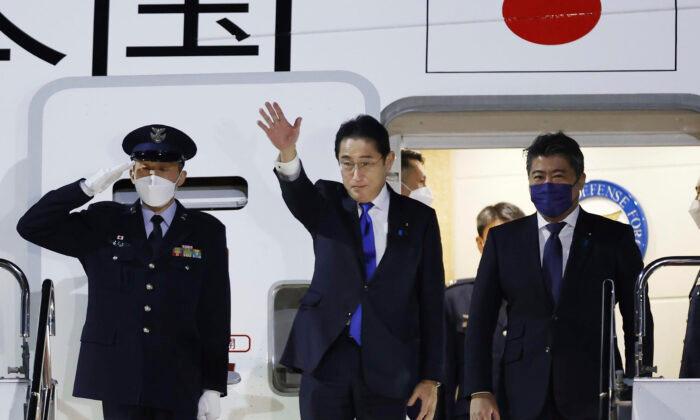Japan’s prime minister will visit India next week with a focus on promoting a “free and open Indo-Pacific” amid concerns over Beijing’s military assertiveness in the region, according to the Japanese Foreign Ministry.
Details about the leaders’ meeting are scarce, but it’s anticipated that Kishida will unveil a new strategy for a free and open Indo-Pacific during his trip and seek India’s support in implementing this strategy.
“Japan is our very important partner. We have annual summits with them and this is part of that. They are also partners in plurilateral and multilateral constructs, so we look forward to a rich discussion,” he told reporters on March 16.
Bagchi refused to provide any specifics about the leaders’ upcoming meeting.
“We look forward to taking forward those discussions, but what will be the talking points, what will be the outcomes, let the leaders talk about it. I think it’s pretty far too soon to judge that,” he said.
India and Japan have been adding more depth to their relations, especially in defense and strategic affairs, as both nations face threats from a dominant China.
Japan’s National Security Strategy
Kishida’s plan is in line with Japan’s National Security Strategy (PDF) released in December 2022, which states that Japan will promote joint development of defense equipment and training with “like-minded countries and others in the Indo-Pacific region.”“Japan will strive to make the vision of a [Free and Open Indo-Pacific] more universal around the world, create rules to expand the free and fair economic zone, improve connectivity, empower governance of countries and international organizations, and expand efforts to ensure maritime security,” it reads.
“While utilizing frameworks such as the Japan–U.S.–ROK [Republi of Korea], and Japan–U.S.–Australia, Japan will enhance security cooperation with Australia, India, ROK, European countries, ASEAN [Association of Southeast Asian Nation] countries, Canada, NATO, EU, and others.”

Beijing Threat
Members of the Quad have increased defense cooperation because of growing concerns over the Chinese Communist Party’s (CCP’s) military assertiveness in the Indo-Pacific region, with Japan describing the CCP as its “greatest threat” to national security.Japan is concerned about its own vulnerability as the CCP expands its military presence near Taiwan and the East China Sea, where the Japanese-controlled Senkaku Islands are located. The regime in Beijing hasn’t ruled out using force to bring Taiwan under its control.
Japan deployed four F-2 and four F-15 fighters to participate in the Veer Guardian 2023 joint drill, while India sent four Su-30 MKI fighters, two C-17 transport aircraft, and one IL-78 refueling tanker.




